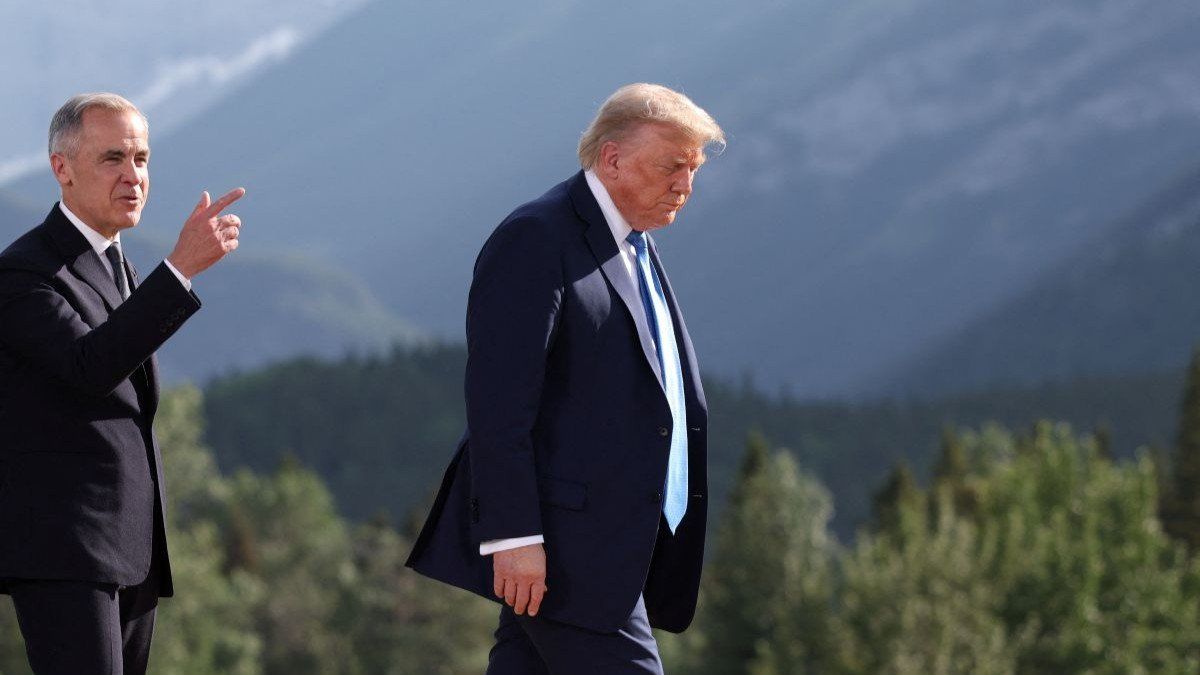The G7 meeting this week was always going to be a tricky one. Set against the backdrop of the picturesque mountains of the Kananaskis Range, the meeting also took place amid a much uglier global tableau of trade wars between the world’s largest economies, and ongoing actual wars between Russia and Ukraine, Israel and Hamas and, on the summit’s eve, Israel’s airstrikes on Iran.
All of that was in addition to other long standing agenda items like artificial intelligence, transnational crime, and climate change. And looming over the whole gathering like Mount Galatea itself: the fact that the G7 looks ever more like a G6+1 – with Donald Trump’s US at odds with most of the others on key issues.
So now that it’s over, was it a success for host country Canada and Prime Minister Mark Carney? The report card is mixed. Here are five takeaways that tell the story:
Lapel-level diplomacy: a pin-sized win
It was the lapel pin seen ‘round the world, to paraphrase former Canadian Conservative Party leader Erin O’Toole. Okay, seen ‘round Canada, at least. Arriving at the G7, Donald Trump sported a pin featuring the Canada and US flags intertwined. Although Trump was sporting a US flag pin above that, the chattering classes in Canada chose to read the hardware as a good sign that maybe the two countries are ready to go steady again after all. These days you take the wins you can get.
Trade deal pinky promise: medium-sized win with potential to upsize to large
Maybe the pin worked a little magic. After an hour-plus bilateral talk on Monday, Mark Carney announced that he and Trump had agreed to ink a trade deal within 30 days. Washington is reportedly still pressuring Canada over its dairy tariffs and digital services taxes. The president reaffirmed that he’s “a tariff person” with “a different concept” of trade from Carney, but also noted the prime minister's “more complex idea” was nonetheless “very good.”
Trump was mostly contained: big win (accomplished the near-impossible)
Avoiding any big dustup with Trump was an important goal, and that seemed to go pretty well. Despite an opening harangue from Trump about why Russia should be back in the group – Moscow was booted over its 2014 annexation of Crimea – Carney did his best, buttering up the president at a joint presser, saying “The G7 is nothing without U.S. leadership.”
It’s true that Trump left early, but it was for a good reason – to address the Israel-Iran crisis – and with no animosity. That’s an improvement from the last time Trump left a Canadian G7 meeting, splitting from at Charlevoix, Quebec in 2018 with a tweet that then-prime minister Justin Trudeau was “Very dishonest & weak.” Carney has a very different – and much better – relationship with the US president. That by itself is a W.
Resetting relations with India: a win for some a capitulation for others
Mark Carney caught a lot of flack, including protests, for inviting Indian Prime Minister Narendra Modi to the G7 meeting in the hopes of resetting Canada’s relationship with India. It was a bold move considering Canada’s intelligence agency warned just last Friday that India actively interferes in Canada’s political affairs and was involved in the 2023 murder of a Sikh Canadian in British Columbia. Nonetheless, the countries agreed to restore full diplomatic relations, including naming high commissioners, and talked about “opportunities to deepen engagement in areas such as technology, the digital transition, food security, and critical minerals.”
Working together as a group: low-hanging fruit, but little progress on the hard questions
The latter hours of the meeting produced several joint statements: members agreed on a series of measures to adopt and support artificial intelligence and quantum technologies. They also agreed to develop a critical minerals action plan, to adopt a wildfire charter, to counter migrant smuggling, and to condemn transnational repression.
But they couldn’t agree on a statement about Russia and Ukraine because of American efforts to soften the language, and had little to say on the Israel-Iran conflict beyond calling for de-escalation and re-affirming that the Iranian government mustn’t develop nuclear weapons.
Final verdict: beautiful setting, middling progress, no disasters. Overall, a qualified win for Carney, but only if he can keep the momentum up in areas that matter to Canadians.
